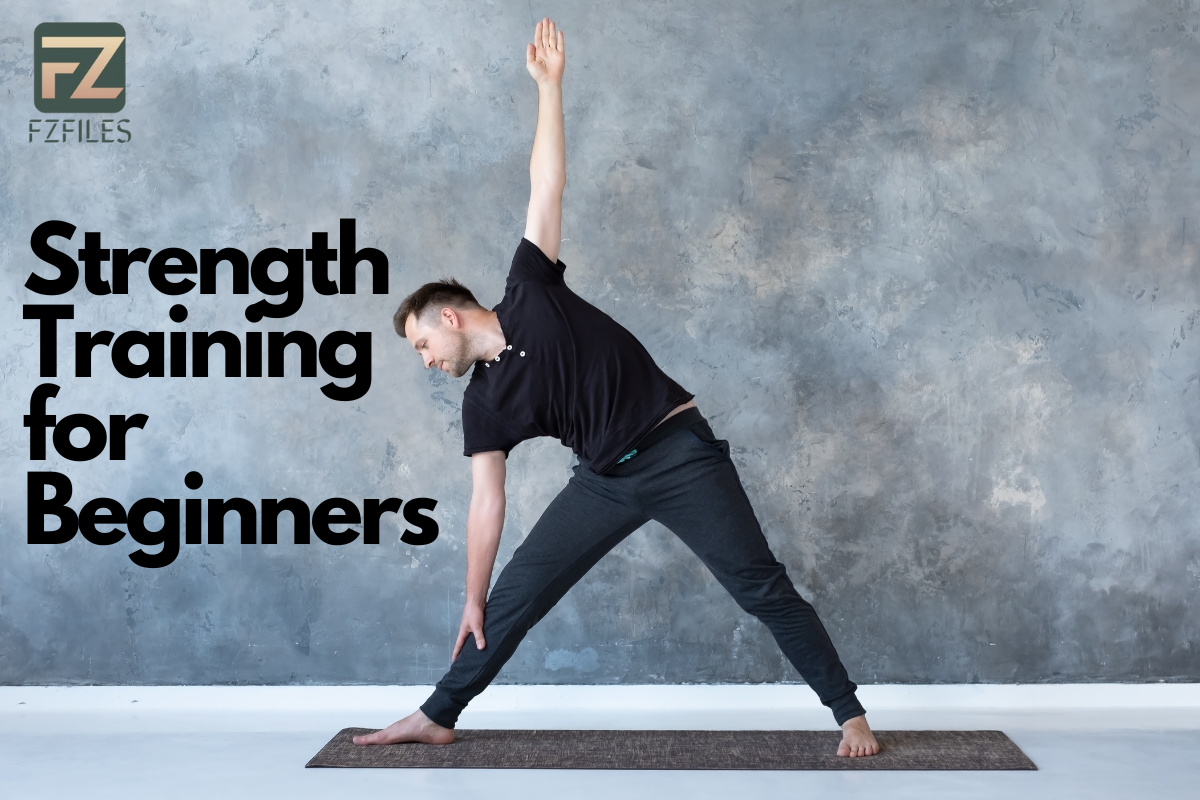Introduction to Strength Training for Beginners
Strength training, also known as resistance training, is a type of physical exercise specializing in the use of resistance to induce muscular contraction, which builds the strength, anaerobic endurance, and size of skeletal muscles. For beginners, starting a strength training routine can be both exciting and intimidating. This guide aims to demystify the process, providing you with the knowledge and confidence to embark on your strength training journey.
Strength training is essential not only for athletes but for everyone looking to improve their overall health and fitness. It helps in building muscle mass, improving bone density, boosting metabolism, and enhancing mental health. According to Verywell Fit, Men’s Health, and Livestrong, proper guidance and understanding are crucial for beginners to avoid injuries and achieve optimal results.
Benefits of Strength Training
- Increased Muscle Mass and Strength
Strength training helps increase muscle mass by creating small tears in the muscle fibers, which then repair and grow stronger. This process, known as hypertrophy, is essential for building strength and improving overall muscle tone.
- Upgraded Metabolic Rate
Muscle tissue is metabolically dynamic, meaning it consumes a larger number of calories very still than fat tissue. By expanding your bulk through strength preparation, you can support your basal metabolic rate (BMR), helping with weight the executives and fat misfortune.
- Worked on Bone Thickness
Strength preparation puts weight on the bones, which animates bone-framing cells and assists increment with boning thickness. This is especially valuable in forestalling osteoporosis and diminishing the gamble of cracks.
- Better Psychological wellness
Taking part in normal strength preparation can work on psychological well-being by diminishing the side effects of nervousness and sorrow. It discharges endorphins, which are regular temperament lifters and give a feeling of achievement.
- Improved Utilitarian Wellness
Strength preparation works on utilitarian wellness, making regular exercises simpler. It improves equilibrium, coordination, and steadiness, lessening the gamble of falls and wounds.
Essential Strength Preparing Activities

Squats
Squats are central activities that focus on the lower body, including the quadriceps, hamstrings, glutes, and calves. They impersonate ordinary developments like sitting and standing, making them profoundly useful.
Instructions to Perform Squats:
- Stand with your feet shoulder-width separated.
- Bring down your body by twisting your knees and hips, keeping your back straight.
- Lower until your thighs are lined up with the ground.
- Get back to the beginning situation by fixing your legs.
Push-Ups
Push-ups are exemplary chest area practices that work the chest, shoulders, rear arm muscles, and center. They are viable for developing chest area fortitude and can be altered for various wellness levels.
Instructions to Perform Push-Ups:
- Begin in a board position with your hands shoulder-width separated.
- Bring down your body by twisting your elbows, keeping your body straight.
- Lower until your chest almost contacts the ground.
- Push back up to the beginning position.
Deadlifts
Deadlifts focus on the back chain, including the lower back, glutes, hamstrings, and center. They are incredible for developing fortitude and further developing stance.
Instructions to Perform Deadlifts:
- Stand with your feet hip-width separated, with a free weight before you.
- Twist at the hips and knees to get a handle on the free weight with an overhand grasp.
- Lift the hand weight by fixing your hips and knees, keeping your back straight.
- Bring down the hand weight back to the ground by bowing at the hips and knees.
Boards
Boards are isometric activities that fortify the center, shoulders, and glutes. They further develop strength and perseverance.
The most effective method to Perform Boards:
- Begin in a lower armboard position, with your elbows under your shoulders and your body in an orderly fashion.
- Stand firm on the situation, keeping your center connected with your back level.
- Keep up with as far as might be feasible without compromising structure.
Columns
Lines focus on the upper back, shoulders, and biceps. They are vital for fostering major areas of strength for a further developing stance.
Instructions to Perform Lines:
- Stand with your feet shoulder-width separated, holding a free weight in each hand.
- Twist at the hips and knees, keeping your back straight.
- Pull the free weights towards your middle, crushing your shoulder bones together.
Bring down the free weights back to the beginning position.
- Determine Your Goals
Before starting a strength training routine, it’s important to determine your fitness goals. Are you looking to build muscle, lose weight, improve endurance, or enhance overall fitness? Your goals will dictate the structure and focus of your routine.
- Choose the Right Exercises
Select exercises that target all major muscle groups. A balanced routine should include exercises for the chest, back, shoulders, arms, legs, and core. Compound exercises, which work for multiple muscle groups at once, are particularly effective for beginners.
- Set a Schedule
Start with a manageable schedule, such as three times per week, allowing at least one rest day between sessions. As you become more experienced, you can increase the frequency and intensity of your workouts.
- Focus on Form
Proper form is crucial to prevent injuries and ensure effective workouts. Consider working with a certified personal trainer to learn the correct techniques for each exercise.
- Progress Gradually
Begin with lighter weights and gradually increase the resistance as you become stronger. Focus on progressive overload, which involves gradually increasing the weight, reps, or sets to continue challenging your muscles.
- Incorporate Rest and Recovery
Allow your muscles time to recover by including rest days in your routine. Recovery is essential for muscle growth and preventing overtraining.
Common Mistakes to Avoid
- Skipping Warm-Ups
Warming up is essential to prepare your muscles and joints for exercise. A proper warm-up increases blood flow reduces the risk of injury, and enhances performance.
- Using Incorrect Form
Using improper form can lead to injuries and reduce the effectiveness of your workouts. Focus on mastering the correct techniques before increasing the intensity.
- Neglecting Rest and Recovery
Overtraining can lead to fatigue, injuries, and burnout. Ensure you include rest days in your routine and listen to your body.
- Lifting Too Heavy Too Soon
Starting with weights that are too heavy can compromise form and increase the risk of injury. Begin with lighter weights and progress gradually.
- Not Setting Realistic Goals
Setting unrealistic goals can lead to frustration and disappointment. Set achievable, measurable goals and celebrate your progress along the way.
Conclusion
Starting a strength training routine can be a game-changer for your fitness journey. By understanding the basics, choosing the right exercises, and avoiding common mistakes, you can build a strong foundation and achieve your fitness goals.

[…] of yoga for more established grown-ups, protected and delicate yoga presents, how to make a senior-accommodating yoga schedule, and master ways to rehearse yoga in later […]
[…] are some effective exercises that can be done at home with minimal or no […]